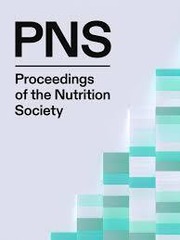No CrossRef data available.
Article contents
Alterations to sour taste intensity in depression
Published online by Cambridge University Press: 07 May 2024
Abstract
Sour foods, such as citrus fruits, some berries and fermented foods provide a range of nutrients and benefits important to mental health [1]. When sourness is perceived as unpleasant, intake of these foods may be reduced affecting mental health. Early research has shown changes to sour taste perception in depression and stress however, changes in anxiety have not been studied [4-8]. To address this gap and build on the knowledge base, a survey was conducted in which participants (n = 424) rated recalled intensity and liking of sour index foods and completed the Depression, Anxiety, and Stress Scale (DASS-21) to measure these states. Variations in sour taste and mood have been demonstrated between females and males, hence the data were explored for sex-differences. Standard least squares regression (post hoc Tukey’s HSD) compared means between groups, and nominal logistic regression assessed differences in distributions between categories. Recalled sour intensity was 16-19.2% higher in those with scores indicative of mild depression than in those with normal scores in the total sample (p range 0.03-0.04), and 17.9-21.3% higher in females (p values were 0.03). There were no differences in sour taste intensity between the intergroup means for anxiety or stress and no associations between sour liking and any of the mood states. The results suggest that the sourness of index foods increases in depression. Further research to elucidate the biological processes and possible taste-related genetic influences that may be occurring would be beneficial. With this knowledge it may be possible to screen for mood conditions by measuring changes to sour taste that appear alongside other signs and symptoms, create more tailored dietary interventions and develop additional therapeutics.
Keywords
- Type
- Abstract
- Information
- Copyright
- © The Author(s), 2024. Published by Cambridge University Press on behalf of The Nutrition Society





